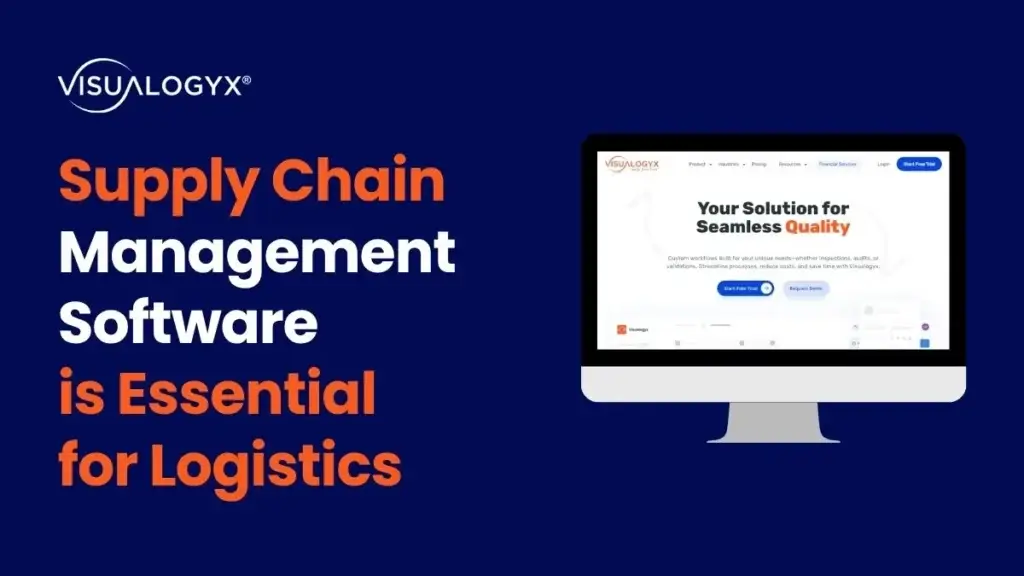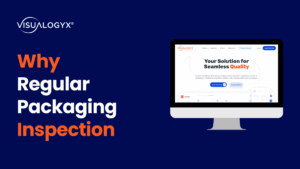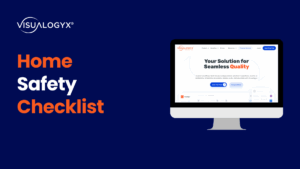Create the Perfect Daily Forklift Inspection Checklist
Forklifts are essential machines in various industries, from warehouses to construction sites. However, they can also be hazardous if not properly maintained and inspected. According to the Occupational Safety and Health Administration (OSHA), forklift accidents cause approximately 34,900 serious injuries each year, with nearly 85 fatalities. These alarming figures highlight the critical role that regular inspections play in ensuring both safety and efficiency. Without proper safety measures, businesses risk not only injuries but also productivity losses and costly downtime.
One of the most effective ways to mitigate risks is by using a daily forklift inspection checklist. This checklist serves as a vital tool, ensuring that operators check key components before every use. By following a standardized checklist, companies can significantly reduce the chances of mechanical failure or accidents, leading to a safer working environment.
This blog aims to provide a comprehensive guide on how to develop a perfect daily inspection checklist for forklifts, covering the essential steps and requirements that will help ensure safety and compliance with industry standards.We will explore why daily forklift inspections are crucial for maintaining operational efficiency and protecting your workforce.
Why Daily Forklift Inspections are Crucial?
Before operating a forklift, it is essential to conduct a thorough daily inspection. This step helps identify any potential issues that could compromise the machine’s performance or, worse, cause accidents. Failure to inspect a forklift regularly exposes both operators and nearby workers to significant risks, including equipment failure, tipping, or collisions. For example, unchecked tires or worn-out brakes can lead to loss of control, resulting in costly damages or injuries. These hazards not only put lives at risk but also disrupt operations, causing unexpected downtime and repairs.
Daily forklift inspections are more than just a safety measure—they’re also a regulatory requirement. According to OSHA standards, forklift operators must check their equipment before each shift to ensure compliance with safety regulations. By performing these inspections, companies avoid violations and potential penalties while ensuring the smooth functioning of their daily operations. Regular checks help to minimize breakdowns and extend the lifespan of the equipment, reducing maintenance costs in the long run.
Before operating a forklift, check the key components that are most likely to cause issues if neglected. These include the brakes, steering mechanism, tires, mast, and hydraulic system. Inspect the forks for any visible damage and confirm that all safety features, such as seat belts and warning lights, are in proper working order. A well-executed inspection not only ensures the forklift is safe to operate but also contributes to an efficient workflow, as operators can confidently perform their tasks without worrying about mechanical failures.
With daily inspections forming the backbone of forklift safety and compliance, let’s now delve into the specific components that should be included in a thorough daily forklift inspection checklist.
Components of a Daily Forklift Inspection Checklist
A comprehensive forklift inspection checklist is crucial for ensuring the safe and efficient operation of forklifts. By conducting a thorough daily check, operators can identify and address potential issues before they lead to accidents or breakdowns. Below are the essential components that must be inspected each day:
-
- Tires
Check the condition of the tires for any cuts, punctures, or excessive wear. Ensure that they are properly inflated and that the tread is intact, especially if operating on uneven surfaces or carrying heavy loads.
- Tires
-
- Forks
Inspect the forks for cracks, bending, or other forms of damage. Ensure that they are evenly spaced and securely attached. Damaged or misaligned forks can lead to load instability, increasing the risk of tipping or dropping materials.
- Forks
-
- Hydraulic System
Examine the hydraulic system, including hoses and cylinders, for leaks or visible damage. A malfunctioning hydraulic system can cause difficulties in raising or lowering loads, compromising both safety and efficiency.
- Hydraulic System
-
- Brakes and Steering
Test the brakes to ensure they respond promptly and effectively. Steering should be smooth and free of resistance. Any delay in braking or difficulty in steering could lead to serious accidents, especially in tight warehouse spaces.
- Brakes and Steering
-
- Controls and Gauges
Ensure all operational controls, including the lift, tilt, and lights, are functioning correctly. Check the fuel gauge, oil pressure, and battery charge indicators to verify that the forklift is in optimal condition to complete the shift.
- Controls and Gauges
-
- Seated Inspection on Forklift
During a seated inspection, the operator should ensure that the seating position is comfortable and the seatbelt or restraint system is working properly. A poorly adjusted seat can lead to discomfort or distraction, while a malfunctioning seatbelt increases the risk of injury in the event of sudden stops or collisions.
- Seated Inspection on Forklift
By regularly following this checklist, operators can reduce the risk of equipment failure and accidents. A well-maintained forklift not only ensures safety but also contributes to improved productivity by preventing unexpected breakdowns during operations.
In the next section, we will explore the Forklift Pre-operation Inspection Checklist, diving into the steps that operators should follow before using the forklift each day.
Pre-Operation Checklist for Forklifts
Before starting a forklift each day, a detailed pre-operation inspection is necessary to ensure it is safe and fully functional. This checklist goes beyond visual checks and includes testing the operational controls to confirm the forklift’s readiness for use. The following steps outline a proper Forklift Pre-operation Inspection Checklist, which helps avoid costly repairs, injuries, and productivity loss.
Visual Checks:
-
- Fluid Levels
Check engine oil, transmission fluid, and coolant levels. If you’re working with an electric forklift, ensure the battery is fully charged and inspect the electrolyte levels if applicable.
- Fluid Levels
-
- Leaks and Loose Components
Inspect the ground under the forklift for any fluid leaks. Check for loose bolts, nuts, or any visible signs of wear and tear on the forklift body.
- Leaks and Loose Components
-
- Tires
Examine all tires for proper inflation (for pneumatic tires) or wear (for solid tires). Look for punctures or deep cracks that could compromise safety.
- Tires
-
- Forks and Mast
Check the forks for any bends or cracks and ensure the mast is properly lubricated. Ensure that the chains, hoses, and cylinders are securely in place and functioning correctly.
- Forks and Mast
Operational Checks:
-
- Brakes and Steering
Test the brakes by moving the forklift forward and backward slowly to ensure they engage and release smoothly. Check the steering to ensure that the forklift turns without resistance.
- Brakes and Steering
-
- Hydraulic Controls
Operate the hydraulic controls to raise, lower, and tilt the forks. The controls should respond quickly and smoothly without any delay.
- Hydraulic Controls
-
- Lights and Horn
Verify that all lights (headlights, tail lights, warning lights) and the horn are working properly. This is especially crucial if the forklift will be operated in low-visibility areas or around pedestrian traffic.
- Lights and Horn
-
- Seatbelt and Restraints
Ensure the seatbelt or any other operator restraint systems are functioning correctly. This is a critical part of the inspection, as failure to use a seatbelt can result in serious injury in the event of a rollover.
- Seatbelt and Restraints
Example Pre-operation Checklist:
| Component | Check |
| Fluid Levels | Oil, Coolant, Transmission Fluid |
| Tires | Proper Inflation, No Cracks or Punctures |
| Forks and Mast | No Bends, Cracks; Chains & Hoses Secure |
| Brakes | Responsive, No Grinding Sounds |
| Steering | Smooth Turning, No Resistance |
| Hydraulic Controls | Lift and Tilt Function Properly |
| Lights and Horn | Fully Functional |
| Seatbelt and Restraints | Secure and Working Properly |
For electric forklifts, conducting an electric forklift inspection checklist is equally important. In addition to the standard pre-operation checks, inspect the battery, charging cables, and connectors. Ensure there are no exposed wires or damage to the battery casing. A properly charged battery ensures a full day of operation without interruptions, reducing downtime and maximizing productivity.
With the pre-operation checklist completed, operators can confidently move forward knowing their equipment is in peak condition.
Next, we’ll discuss how to maintain forklifts for long-term safety and efficiency with the Forklift Truck Maintenance Checklist.
Daily Inspection Checklist for Forklift Trucks
Regular maintenance checks are just as important as daily inspections when it comes to ensuring the safe and efficient operation of forklift trucks. While daily inspections focus on immediate operational readiness, truck maintenance addresses long-term safety, performance, and reliability. Conducting a thorough truck daily inspection checklist helps identify potential problems early, reducing the risk of unexpected breakdowns and costly repairs. This checklist is essential for both electric and gas-powered forklifts, ensuring they are in optimal condition.
Forklift Truck Daily Inspection Checklist
Battery (for Electric Forklifts)
-
- Battery fully charged
-
- No visible corrosion on terminals
-
- Connectors and cables securely attached
-
- Water levels in the battery are sufficient (if applicable)
Oil and Fuel (for Gas-Powered Forklifts)
-
- Fuel tank full
-
- No fuel leaks or loose fittings
-
- Oil level checked and topped up
-
- No oil leaks detected around the engine
Brake Fluid
-
- Brake fluid level checked
-
- No visible leaks in brake lines or components
Cooling System
-
- Coolant level within the recommended range
-
- Radiator functioning properly
-
- No leaks or visible damage to cooling components
Belts and Hoses
-
- Belts show no signs of wear or cracks
-
- Hoses are tightly secured and free of leaks
-
- Proper tension in belts
Tires
-
- Tires properly inflated
-
- No visible punctures, cracks, or excessive wear
-
- Tire tread sufficient for the operating environment
Including these checks in your daily routine ensures that your forklift trucks—whether electric or gas-powered—are operating at peak efficiency. Adopting a consistent truck daily inspection checklist not only minimizes the risk of breakdowns but also extends the life of your equipment, reducing long-term maintenance costs.
With the truck maintenance covered, it’s now time to focus on the safety and operational aspects of forklift use. In the next section, we will explore how to operate a forklift safely, ensuring compliance with best practices and industry standards.
Forklift Inspection Requirements and Compliance
Forklift inspections are not just a best practice—they are a legal obligation for businesses operating in warehouses, construction sites, and other industrial environments. Regular inspections are mandated by the Occupational Safety and Health Administration (OSHA) and are critical in ensuring workplace safety and compliance with industry standards. Failing to meet these inspection requirements can lead to serious consequences, including hefty fines, increased risks of accidents, and compromised productivity.
Legal and Industry Requirements for Forklift Inspections
According to OSHA regulations, forklifts must be inspected daily or before each shift if they are used continuously. These inspections should focus on identifying any potential hazards, such as mechanical issues or equipment malfunctions, that could endanger operators or other workers. OSHA specifically outlines that forklifts must be examined for key issues like tire wear, brake functionality, fluid levels, and the overall condition of the forks and hydraulic systems.
In addition to OSHA, many industries have their own specific forklift inspection requirements, depending on the environment and type of forklift in use. Whether the forklifts are electric, gas-powered, or propane-fueled, daily checks ensure compliance with safety protocols and help maintain the integrity of the equipment.
Risks and Penalties for Non-Compliance
Non-compliance with forklift inspection requirements can lead to serious penalties. OSHA can issue fines that range from thousands to tens of thousands of dollars, depending on the severity of the violation and the frequency of occurrences. In worst-case scenarios, businesses that repeatedly fail to comply could face suspension of operations until safety standards are met.
Beyond the financial risks, neglecting regular forklift inspections puts the entire workforce at risk. Forklift-related accidents often result in severe injuries or fatalities, which can lead to costly lawsuits and damage to the company’s reputation. Following a strict forklift inspection checklist not only helps businesses avoid these risks but also ensures that equipment is operating efficiently, reducing downtime and repair costs.
To stay compliant, warehouses and industrial operations must implement daily inspections, keeping accurate records of each inspection and ensuring that all operators are trained to perform them correctly.
With compliance and safety at the forefront, the next step is understanding the importance of accurate record-keeping in forklift operations. In the following section, we’ll discuss how to develop a Forklift Daily Inspection Form that ensures thorough documentation and easy reference for audits and maintenance planning.
Safety Tips for Forklift Operation
Operating a forklift safely is essential not only for the protection of the operator but for everyone in the work environment. Forklifts are powerful machines, and mishandling them can lead to serious accidents, injuries, and damage to property. Following a set of safety practices can minimize these risks and ensure smooth, accident-free operations. Along with daily forklift inspections, adhering to safety guidelines is crucial for maintaining a safe working environment.
General Safety Tips for Forklift Operation
-
- Wear Appropriate Safety Gear
Forklift operators should always wear proper safety gear, including a hard hat, safety goggles, and steel-toed boots. Additionally, using a seatbelt during operation is mandatory to prevent injuries in case of rollovers.
- Wear Appropriate Safety Gear
-
- Follow Speed Limits
Forklifts should be driven at safe speeds, especially when navigating through areas with pedestrian traffic. Always adhere to the speed limits set for the worksite, and avoid sudden turns or stops that could lead to loss of control or tip-overs.
- Follow Speed Limits
-
- Ensure Proper Load Balance
Properly balancing the load is vital for preventing forklifts from tipping over. Always check the forklift’s load capacity and avoid overloading. When lifting, the forks should be as low as possible to stabilize the load, and operators should ensure the load is evenly distributed.
- Ensure Proper Load Balance
-
- Use Proper Signaling and Communication
Forklift operators should be trained to use horns or lights when navigating through busy areas or when approaching corners and doorways. This alerts other workers and pedestrians to the forklift’s presence, reducing the risk of accidents.
- Use Proper Signaling and Communication
-
- Be Aware of the Surroundings
Operators must remain vigilant about their surroundings, especially in confined spaces. Be mindful of obstacles such as shelving, walls, and machinery that may interfere with safe operation. Always look in the direction of travel, whether driving forward or in reverse.
- Be Aware of the Surroundings
-
- Conduct Regular Forklift Inspections
Daily forklift inspections are a key component of safe operation. Inspections help identify any mechanical issues, such as faulty brakes, damaged tires, or low fluid levels, before they become a safety hazard. A well-maintained forklift is far less likely to malfunction or cause accidents.
- Conduct Regular Forklift Inspections
By following these safety tips, forklift operators can significantly reduce the risk of workplace injuries and equipment damage, ensuring smooth and efficient daily operations.
Next, we will discuss the importance of documentation and record-keeping with a detailed guide on creating a Forklift Daily Inspection Form in the final section.
Creating and Using a Forklift Daily Inspection Form
A well-structured Forklift Daily Inspection Form is essential for ensuring that inspections are conducted consistently and thoroughly. This form serves as a checklist that operators can fill out before each shift, documenting the condition of the forklift and identifying any issues that need immediate attention. By maintaining accurate records, businesses can enhance operational safety, ensure compliance, and reduce the likelihood of equipment failure.
How to Create an Effective Forklift Daily Inspection Form
To create a comprehensive form, it should include all key areas of the forklift that require daily checks. The form should be simple enough for operators to complete quickly while being detailed enough to capture any potential safety risks. Here’s a basic structure for the form:
Sample Forklift Daily Inspection Form:
| Section | Components to Check |
Condition (Pass / Fail) |
Comments & Recommendations |
| Battery | Charge level, connections, corrosion | ||
| Fluid Levels | Fuel, oil, brake fluid, coolant | ||
| Tires | Proper inflation, no damage or excessive wear | ||
| Brakes | Functionality, no strange noises or delayed response | ||
| Forks and Mast | No cracks, bends, or visible damage | ||
| Steering Controls | Smooth operation, no resistance or unusual noises | ||
| Safety Equipment | Seatbelt, horn, lights, fire extinguisher |
Operators can fill out this form by marking components as “Pass” or “Fail” and noting any specific issues in the comments section. A supervisor can then review these forms to ensure timely maintenance and repairs.
Benefits of Digital Inspection Solutions
While paper forms are traditional, digital inspection solutions provide numerous advantages for modern businesses. Using a Digital Forklift Inspection Software, operators can easily complete and submit inspection reports using tablets or mobile devices. These solutions offer several key benefits:
-
- Data Tracking and Analysis: Digital systems store inspection data over time, allowing supervisors to identify recurring issues or trends in equipment performance. This data can be used to predict maintenance needs and optimize operations.
-
- Real-Time Reporting: With digital forms, issues can be flagged instantly, allowing for quicker response times and minimizing downtime.
-
- Compliance and Record Keeping: Digital records are easier to maintain and access for audits, ensuring compliance with safety regulations like OSHA.
By implementing a digital solution, businesses can streamline their inspection processes, reduce paperwork, and maintain more accurate records.
Conclusion
A well-implemented forklift inspection checklist is critical for ensuring the safety and efficiency of any warehouse or industrial operation. Daily inspections not only reduce the risk of accidents but also help extend the lifespan of forklifts by catching potential issues early. By adhering to safety regulations, such as those set by OSHA, and maintaining accurate records, businesses can avoid costly fines and unnecessary downtime.
Incorporating these best practices into your daily routine can significantly improve workplace safety and operational efficiency. Whether you use a paper form or upgrade to digital inspection tools, the key is to make sure inspections are thorough and consistent. A reliable forklift inspection checklist helps operators stay compliant, reduces maintenance costs, and keeps operations running smoothly.
By adopting these strategies, you’ll ensure your forklifts remain in top condition, contributing to a safer and more productive work environment.




